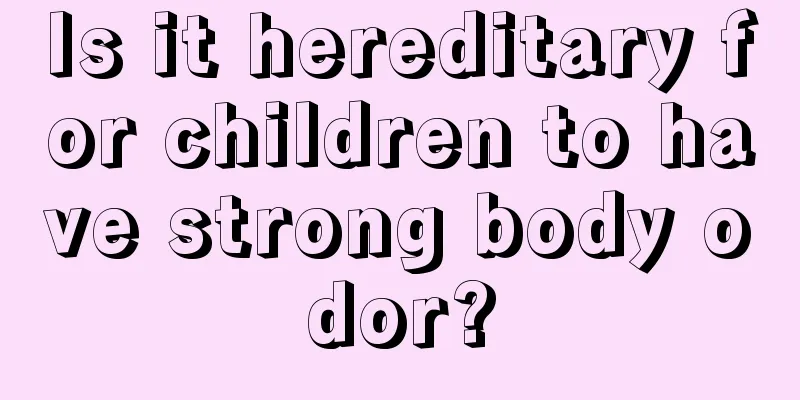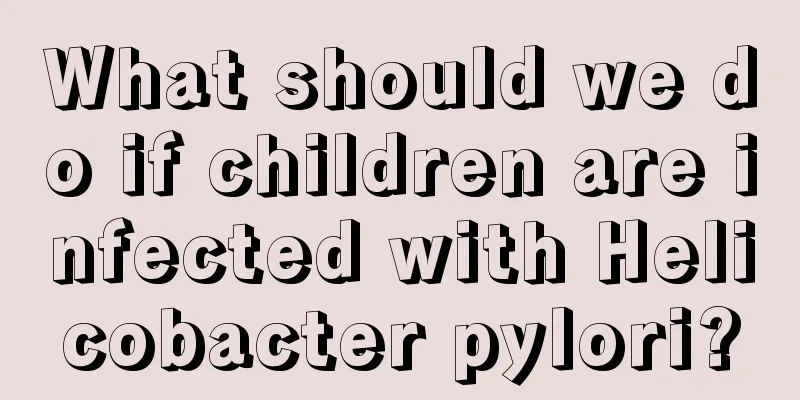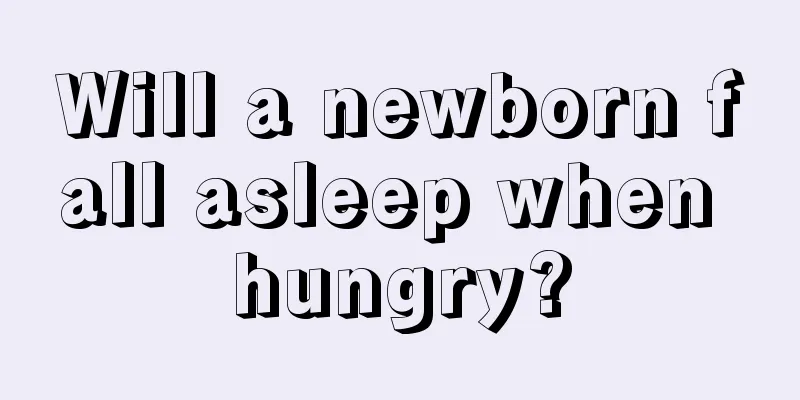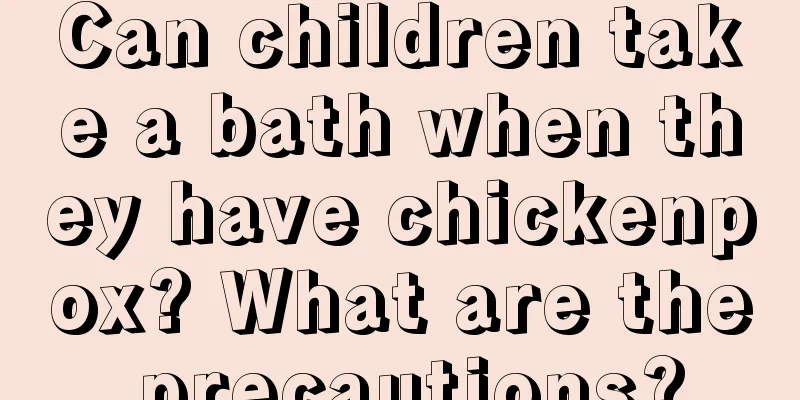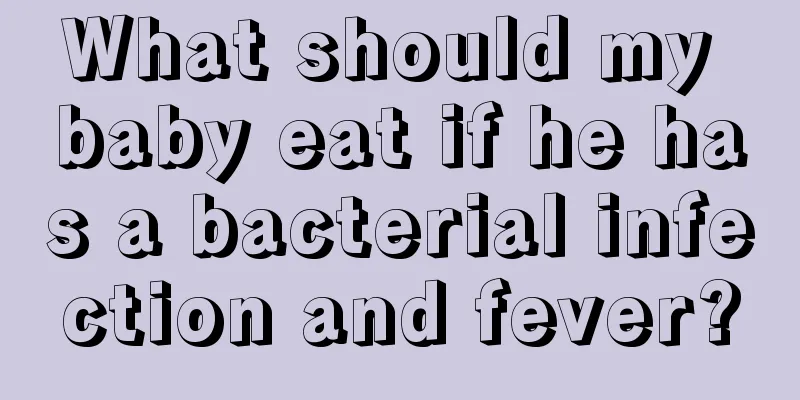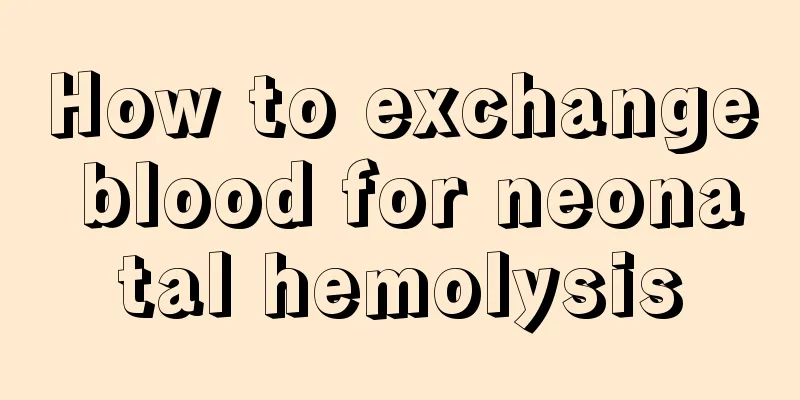9-year-old child shaking hands and feet while sleeping?
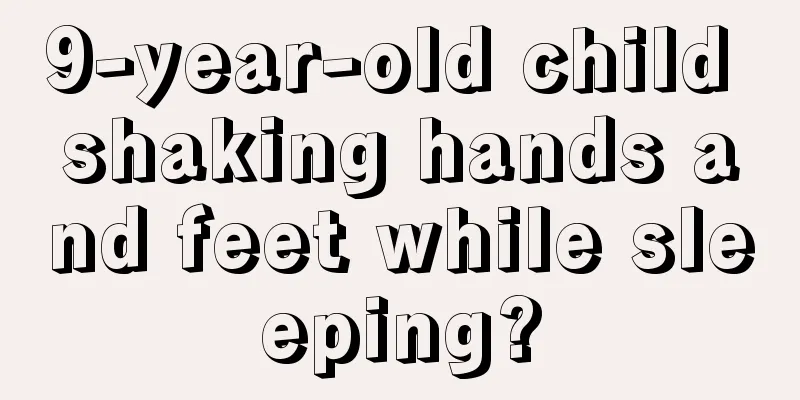
|
If a 9-year-old baby's hands and feet tremble while sleeping, parents should take the baby to the hospital for examination as soon as they find it. If the trembling is not caused by cold or calcium deficiency, it is best to go to the neurology department of the hospital. It is likely that there is a problem with the baby's brain development, and it may also be epilepsy. Parents must enrich the baby's diet in life, pay attention to keeping warm, and ensure adequate sleep. Why does the baby shake suddenly?Mothers don’t need to worry too much about their baby’s shaking within three months. These involuntary, unconscious tremors of the hands and feet are common in newborn babies. They will not affect their future intellectual development and are usually not related to convulsions, epilepsy or calcium deficiency. As the baby grows older and his brain develops, this involuntary shaking will gradually decrease, and will slowly disappear when the baby is 3 or 4 months old. This phenomenon is common in the neonatal period and is a physiological manifestation in medicine. The unconscious shaking of the limbs and body of the newborn is usually called startle. The main reason why newborns startle is that their nervous system is not fully developed, their cerebral cortex is immature, their central nervous cells are highly excitable and easily excited by stimulation. Most babies are in a state of light sleep, and they will startle when they encounter sounds, light, vibrations, or changes in their body position. When a baby experiences this irregular, systemic, short-term, uncoordinated shaking while sleeping, it is not because the baby is frightened but a normal physiological reaction. This is a type of myoclonus, which is a simple, rapid involuntary muscle movement that can be focal, systemic, or multifocal, symmetrical or asymmetrical, repetitive rhythmic or isolated, and spontaneous or induced. Myoclonus is only a clinical symptom, which can be physiological or pathological, while sleep myoclonus is a physiological sleep movement that can be seen in people of any age with normal EEG and unaffected growth and development. What to do if your baby shakes?When the baby is shaking, the mother only needs to hold the baby and press a part of the baby's body to calm the baby down. The important thing is that the mother should give the baby a sense of security and let the baby know that the mother is there. When the child shakes in his sleep, the mother just needs to comfort the child and he will go back to sleep. Parents must not worry too much about their baby being afraid of noise, light, or being easily frightened, and then make the baby's room quiet and dark, and even have to be careful when walking in the baby's room for fear of making any noise. This practice is totally unnecessary and is not conducive to the development of the baby's nervous system. Moreover, in a space with insufficient light, if the baby is really sick, it cannot be observed quickly. How to distinguish between physiological tremors and epilepsy Neonatal epilepsy manifestations Many parents associate physiological tremors with epilepsy. Neonatal epilepsy refers to epilepsy occurring within 28 days of birth. There are many causes of epilepsy, such as genetic inheritance, congenital developmental abnormalities, birth injuries, intracranial infection, craniocerebral trauma, febrile convulsions, etc., all of which can cause epilepsy. The clinical manifestations are complex and diverse, and various types of epileptic seizures and epilepsy syndromes can be seen. Because the cerebral cortex of newborns is not yet fully developed, any adverse stimulation can lead to abnormal discharges in the cerebral cortex, and the positive rate of electroencephalogram examination is relatively high. Symptoms such as nodding, bending, and nodding continuously may be neonatal epilepsy. Neonatal epilepsy may also cause automatic apnea, the child's hands and feet will move on their own, like swimming or riding a bicycle, the mouth may chew and swallow, and have unnatural movements and reactions. Children with the above reactions may have neonatal epilepsy.
Many children in infancy and childhood will have neonatal postural or other non-epileptic seizure motor automatisms and tonic postures. There is often no corresponding EEG abnormality. The tonic posture of the newborn can be local or systemic, and some are accompanied by myoclonic components. These motor behaviors are often classified as "minimal seizures", but they are inconsistent with the EEG ictal pattern. They are more common in children with severe encephalopathy or forebrain function inhibition. It is speculated that these symptoms are release symptoms at the brainstem level caused by abnormalities in normal cortical function. Epilepsy often occurs shortly after waking up in the early morning. Neonatal epilepsy will only cause mild symptoms, such as slight convulsions of the face and limbs. Parents of neonatal epilepsy patients may sometimes see their children making faces at themselves. In fact, this is an unconscious behavior of the child. This is the occurrence of neonatal epilepsy. If the child is a little older, the reaction will be more intense than that of a newborn. There will be a sudden, forceful and rapid twitching of a part of the body. The child may suddenly nod, bend over or lean back. The whole body may suddenly lean back or fall to one side. Some may not fall to the ground, but just "shock". When they fall down during the attack, they will not use their hands to support themselves on the ground. There are usually no signs before the attack. There may also be sudden shaking of the limbs and throwing of objects in the hands. The child does not lose consciousness before and after the twitch and can stand up quickly after falling. Sometimes after a myoclonic seizure, another seizure may occur within seconds or minutes, and this may occur several times in succession. Some children may have up to dozens of seizures a day. Physiological tremors only appear before three months of age. As the months go by, the child will no longer tremble. Moreover, physiological tremors only last for 3-4 seconds, and the child will stop shaking as long as the mother presses a part of his body. Even if epilepsy is suppressed, the patient will continue to shake. Therefore, mothers do not need to worry too much if their newborn babies are shaking. Because many systems of newborn babies are not yet fully developed, strange conditions often occur, but they will gradually get better as the baby grows older. Neonatal epilepsy is a tricky disease. Although the initial symptoms are not obvious, parents will discover them if they observe their children carefully. If a child has suffered brain damage in the womb or during delivery, parents should pay special attention. In general, tremors are physiological and have nothing to do with epilepsy or pathology. |
<<: What causes children's involuntary shaking?
>>: Why is the baby's fontanelle jumping?
Recommend
Treatment for babies who suddenly wake up from sleep
As parents, we are all worried when our children ...
Purpose of hip screening in infants
In fact, babies who have just been born need to g...
Can a two-year-old baby brush his teeth?
The teeth of a two-year-old baby have grown out a...
What is the effective treatment for mumps in children?
Children are easily affected by mumps. Parents sh...
Symptoms of bloating in babies
Now more and more parents are paying more attenti...
How to make a baby with fever sweat
Mothers must have experienced the situation where...
How to know if your child is infected with Mycoplasma pneumoniae? What are the symptoms?
Mycoplasma pneumonia is pneumonia caused by Mycop...
Nursing after hernia surgery for children
As long as there is surgery, there will definitel...
Why is the child breathing heavily?
Children's heavy breathing often attracts the...
What disease causes chest tightness and sighing in children?
Generally speaking, people sigh mainly because th...
What is the disease of swollen lymph nodes in children's neck?
What disease causes swollen lymph nodes in childr...
The child has a fever and a rash
The symptoms of fever are not the same for every ...
What does patent ductus arteriosus mean in newborns?
The arrival of a child makes many families happy,...
What should children eat when they have a cough and runny nose?
Children coughing and runny nose is a phenomenon ...
Treatment of pharyngeal ulcers in children
Children's throat ulcers look very scary. Rec...
